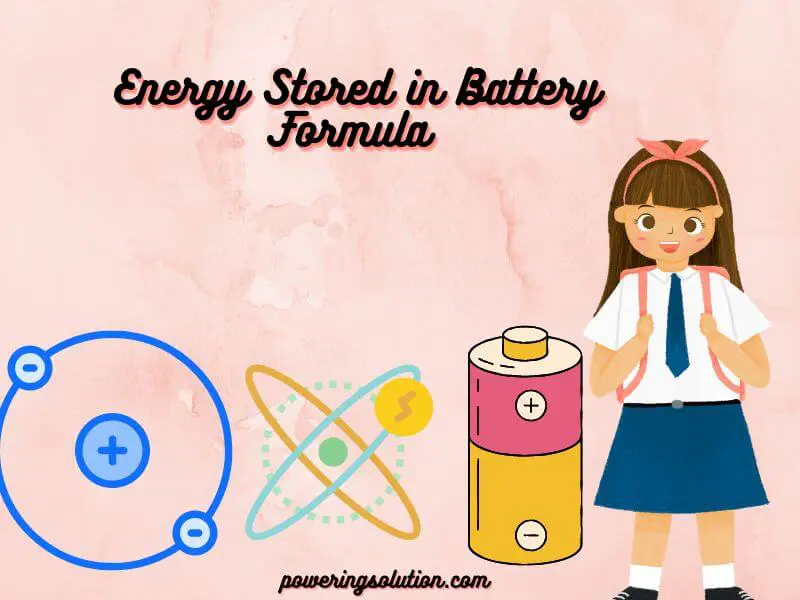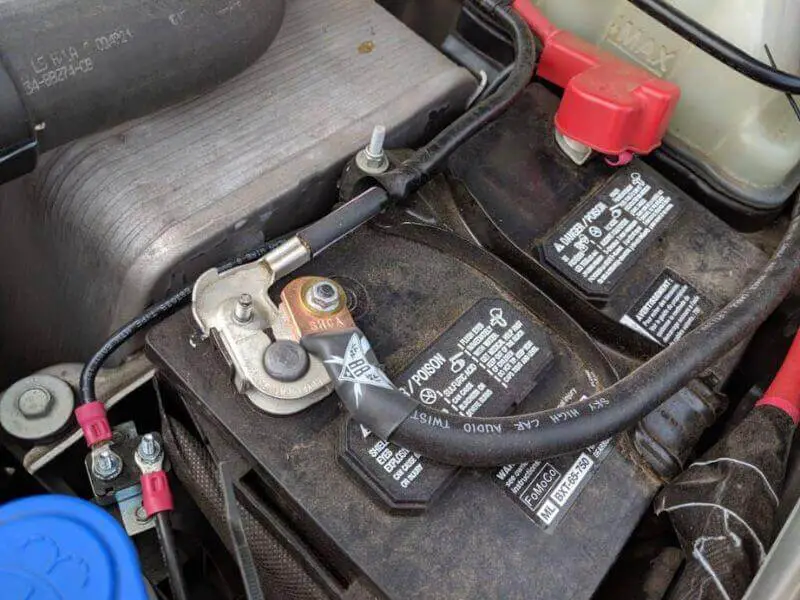Chemical energy is stored in batteries through a process called electrochemical reactions. In this process, electrons are transferred between two electrodes, one made of metal and the other of carbon. The reactions occur in an electrolyte solution that contains ions.
The ions are attracted to the electrodes and help to conduct the electrical current. As the electrons flow from one electrode to the other, they create an electric field that powers the battery.
Batteries store chemical energy by converting it into electrical energy. This is done by using a chemical reaction to create an electric current. The lead-acid battery is the most common type, which uses a reaction between lead and sulfuric acid to create an electric current.
What is the Form of Energy That Batteries Store Energy As?
Batteries store energy in the form of chemical potential energy. This energy is converted into electrical energy when the battery is connected to an electrical circuit. The chemical reaction inside the battery creates a voltage difference between the positive and negative terminals, which causes current to flow through the circuit.
Energy Stored in Battery Formula

To calculate the amount of energy stored in a battery, you must first know the battery’s capacity in Amp-hours (Ah). The capacity is usually listed on the battery and is typically measured in Ah. Once you have this number, you can use the following formula to calculate the amount of energy stored in the battery:
Energy (in watt-hours) = Capacity (in amp-hours) x Voltage (in volts) For example, let’s say you have a 12-volt battery with a capacity of 20 Ah. To find out how much energy is stored in this battery, you would simply multiply 20 by 12 to get 240 watt-hours. Energy can transfer from one place to another place.
This means that when fully charged, this particular battery can provide up to 240 watts of power for one hour before recharging. Of course, the actual amount of power a battery can provide will depend on several factors, including:
- How old is the battery is
- How it has been treated,
- What kind of load is it powering
But using this simple formula should give you a good starting point for estimating the amount of energy your batteries are capable of storing.
Do Batteries Store Energy As Chemical Energy?
Batteries store energy in the form of chemical energy. The lead-acid battery is the most common type, which uses a chemical reaction between lead and sulfuric acid to create an electrical current. This reaction creates a lot of heat, so lead-acid batteries must be cooled to prevent them from overheating.
Lithium-ion batteries are another type of battery that stores energy as chemical energy. These batteries are used in cell phones and laptops because they are smaller and lighter than lead-acid batteries.
How Do Batteries Work?
Batteries are one of the most important inventions in human history. They allow us to store energy and use it when we need it. But how do batteries work?
Batteries have three main components:
- A cathode
- An anode
- An electrolyte
The cathode is the positive end of the battery, while the anode is the negative end. The electrolyte is a conductive material that allows electrons to flow between the two electrodes.
When a battery is connected to a load (such as a light bulb), electrons flow from the anode to the cathode through the electrolyte. This creates a current that powers the load. When the load is removed, electrons flow back to the anode, restoring the battery to its original state.
The key to a battery’s operation is its chemical reaction. Different types of batteries use different chemicals for their electrodes and electrolytes.
Today’s most common type of battery is lead-acid, which uses lead and sulfuric acid for its electrodes and electrolyte.
Other common types include lithium-ion batteries (used in laptops and cell phones) and nickel-cadmium batteries (used in rechargeable power tools).
How Do Batteries Produce Electricity?
Batteries produce electricity through a process called electrochemical reactions. This process involves the transfer of electrons between two electrodes, one positive and one negative. An electrolyte connects the electrodes, allowing ions to flow between them.
When the battery is in use, the positively charged ions flow from the negative electrode to the positive electrode, producing an electric current. The chemical reaction that produces electricity in a battery is not 100% efficient, so some energy stored in the battery is lost as heat. However, batteries can still convert a significant amount of chemical energy into electrical energy, making them a very important part of our lives.
What is a Battery?
A battery is a device that stores energy and converts it into electricity. Batteries are used in many electronic devices, including cell phones, laptops, and flashlights. The most common type of battery is the lithium-ion battery.
A Battery is a Source of What?

A battery is a source of electricity that uses chemical reactions to create a flow of electrons. The most common type of battery is the lead-acid battery, which contains lead and sulfuric acid. When these two substances are combined, they produce a chemical reaction that produces electrons.
Where is Chemical Energy Stored in a Battery?
Batteries are one of the most common ways that chemical energy is stored. A battery is a container holding two or more electrically charged particles called ions. When the battery is connected to an electrical circuit, the ions flow back and forth between the electrodes, creating an electric current.
The amount of chemical energy that can be stored in a battery depends on the type of battery and the materials used to create it.
How is Chemical Energy Used in Batteries?
Batteries are electrical devices that store chemical energy and convert it into electrical energy. The chemical reaction inside the battery creates an electric current. This current is then used to power electronic devices such as flashlights, cell phones, and laptops.
Lead Acid Battery
The most common type of battery is the lead-acid battery. Lead-acid batteries convert the chemical energy of sulfuric acid into electrical energy. The lead plates inside the battery react with the sulfuric acid to create lead sulfate.
This reaction produces electrons that flow through a circuit, powering your electronic device. Lead-acid batteries are typically used in cars and trucks because they provide high power levels and are relatively inexpensive to produce. However, they are not well suited for portable electronic devices because they are heavy and require regular maintenance.
Lithium-ion Battery
Lithium-ion batteries are another type of battery that uses chemical reactions to store and release electrical energy. Lithium-ion batteries work by shuttling lithium ions back and forth between positive and negative electrodes within the battery. This movement of ions creates an electric current that can be used to power electronic devices.
Lithium-ion batteries are much lighter than lead-acid batteries, making them ideal for use in portable electronics such as cell phones and laptop computers.
What Form of Energy is Stored in Batteries?
Batteries are a type of electrical energy storage device. They store chemical energy in chemical energy, which can be converted back into electrical energy. The most common type of battery is the lead-acid battery, which contains lead and sulfuric acid.
Other batteries include lithium-ion batteries, nickel-cadmium batteries, and nickel-metal hydride batteries.
Conclusion
Batteries store chemical energy that can be converted into electrical energy. The chemical reaction in the battery creates an electric current that powers devices. Batteries come in many different shapes and sizes, and each type of battery has a different chemical makeup.
The most common type of battery is the lead-acid battery, which is used in cars.
